Move over, pumpkin: China’s favorite taste of fall is persimmon
October is the season for the persimmon, an orange-colored fruit widely enjoyed in China for its sweet, honey-like flavor and auspicious associations. Take a look at all the ways it’s being presented.

In the U.S., nothing says fall like the return of pumpkin-spice-flavored products on grocery shelves and coffee shop menus. But in China, a different type of orange crop reigns supreme during this time of year.
The persimmon (柿子 shìzi) is an autumn fruit prized for its vivid color, soft jelly-like texture, and sweet, mild flavor. Mainly produced in Asia and typically in season from September through December, the tomato-shaped treat has been widely enjoyed in China for thousands of years. But this fall, persimmons are getting the pumpkin spice treatment, as beverage shops, dessert boutiques, and restaurants are finding ways to infuse the flavor into limited-time offerings, branding it as the quintessential taste of the season.
Back to its roots
Although the word “persimmon” actually derives from the Native American Algonquian word “pessamin,” which literally means “fruit artificially dried,” the fruit is believed to have originated in China, where it’s known to have existed for more than 10,000 years. The Chinese name for persimmon first appeared in the Book of Rites, also known as the Lǐjì 礼记, a Confucius classic on bureaucracy and rituals published during the Zhou dynasty (c. 1046-256 BC).
China news, weekly.
Sign up for The China Project’s weekly newsletter, our free roundup of the most important China stories.
The earliest known record of human domestication of persimmons dates back to the Qin and Han dynasties (221 BC – AD 220), with large-scale cultivation appearing during the Tang (618-907) and Song (960-1279) periods. In Shàng Lín Fù 上林賦, a notable piece of work in Chinese literature, written by a prominent Chinese essayist and poet named Sīmǎ Xiàngrú 司马相如, the author notes that the fruit was one of the crops planted in Shanglin Garden, a royal garden established by Liú Chè 劉徹 , the ruler of the Western Han dynasty (206 BC – 24 AD). Legend also has it that Zhū Yuánzhāng 朱元璋, the founding emperor of the Ming dynasty, survived on persimmons after running out of food when he was a peasant.
The species was eventually introduced to Japan and Korea in the 7th and 14th centuries, respectively. Today, China accounts for 72 percent of the total production of the fruit worldwide. The top persimmon-growing provinces in the country are Guangxi, Hebei, Henan, and Shaanxi.
Of dozens of persimmon varieties, some stand out
While they don’t necessarily look the part, persimmons are actually berries by morphology. They grow on plants from the Diospyros genus, which encompasses over 700 species of deciduous and evergreen trees and shrubs. Long-living and visually stunning, Diospyros kaki, also known as the oriental persimmon, is the most commonly cultivated tree to bear the fruit. Similar in shape to an apple tree, the kaki tree can grow up to 10 meters (32.8 feet) in height, with its leaves changing colors once autumn comes around.
Persimmons come in different shapes and sizes, but their overall appearance can be likened to waxy, golden-orange tomatoes. The coloring of their exterior spans a broad spectrum, from pale yellow to dark orange, and even brown or black in some species. When ripe, persimmons are shiny and plump like a water balloon about to pop.
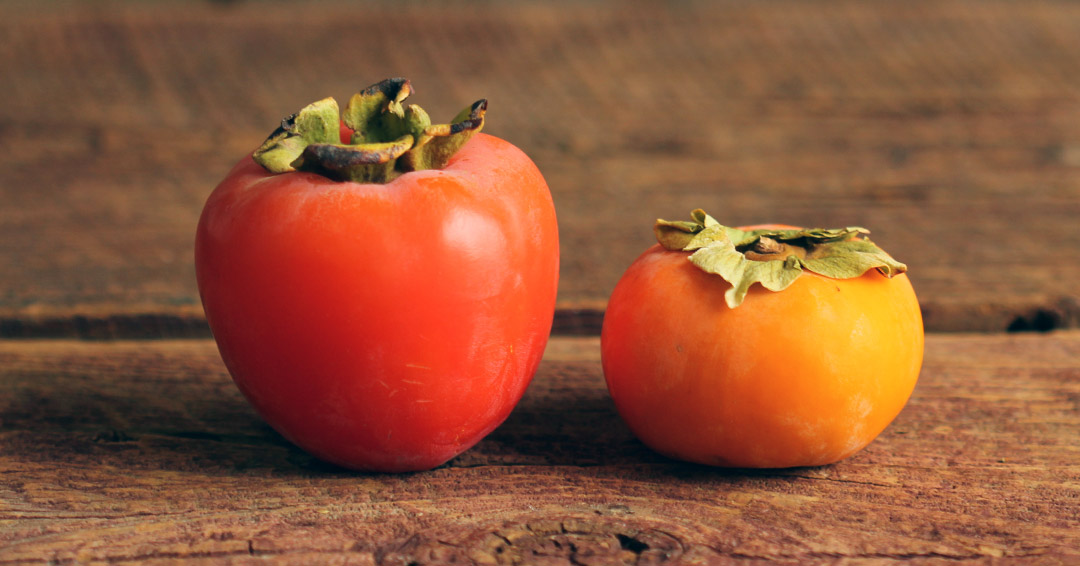
Not all persimmons are created equal, though. Among its varieties, there are two main types of the fruit: the astringent type, represented mainly by the Hachiya cultivar, and the non-astringent kind, which is often called the Fuyu persimmon. Both of them can be referred to as Chinese persimmons or kaki persimmons due to their association with the Diospyros kaki tree.
Round and squat and tomato-shaped, Fuyus are moderately sweet and can be enjoyed either firm or fully ripened. Due to its versatility, the Fuyu is the most commonly cultivated persimmon in the world.
Unlike their non-astringent counterparts, eating a Hachiya persimmon requires knowledge and patience. Larger than the Fuyu and shaped a bit like an acorn, Hachiyas should not be consumed until they are fully ripe. Before they’ve reached peak ripeness, Hachiyas are intensely sour. As they ripen, their skin turns increasingly transparent, as their flesh becomes outrageously soft.
The Chinese way of enjoying persimmons
Fresh Fuyus and ripe Hachiyas both can be consumed raw like regular fruits. But over the years, Chinese people have developed a variety of persimmon recipes to accentuate the fruit’s sweetness and elevate its subtle flavor.
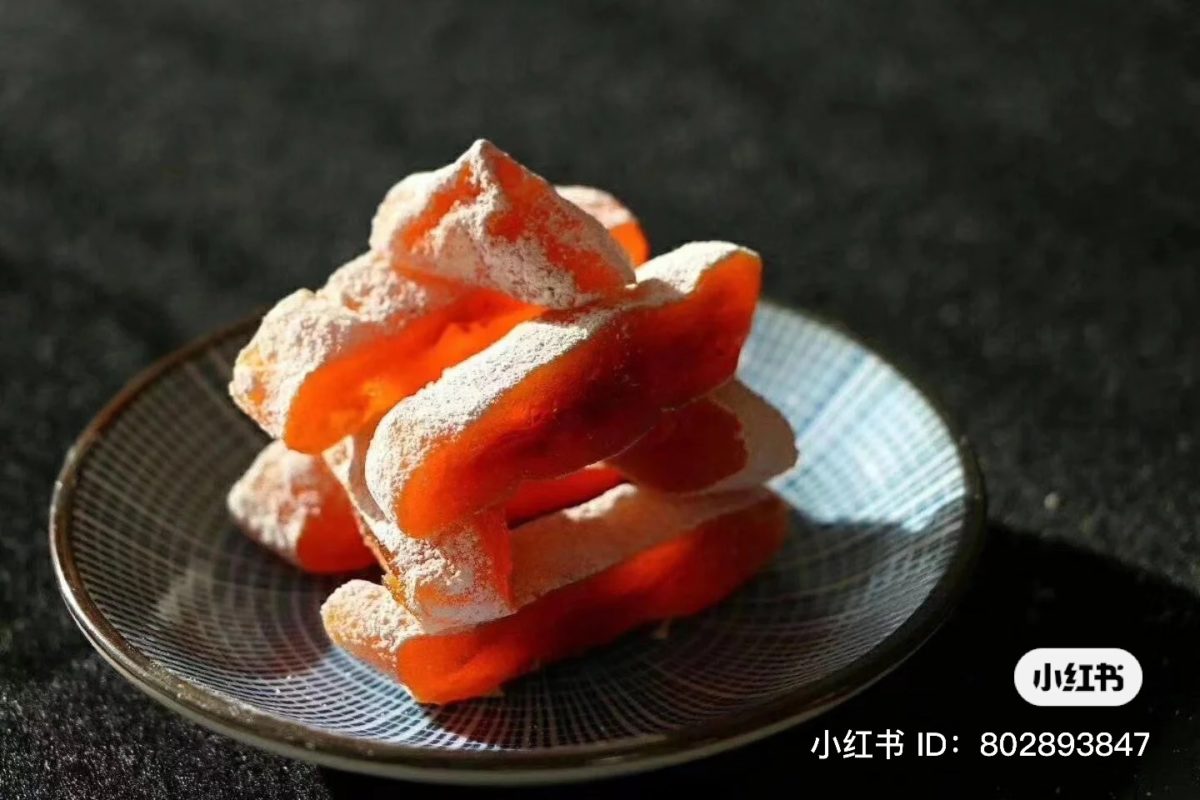
One of the most popular ways to eat persimmons is to turn them into shìbǐng 柿饼, a type of dried fruit snack. To make shibing, persimmons need to be peeled and hung in a sunny, airy place over a period of several weeks. When the persimmons are ready, their surface is coated with a thin layer of white powder; a deep, nuanced sweetness is formed in the flesh. This centuries-old method of preserving the fruit is also observed in Japan as hoshigaki and in South Korea as gotgam.
In northern China, where fresh fruits are scarce in the cold climate, locals like to leave persimmons outside on window sills and roof ledges to freeze as temperatures fall. Once they are frozen solid, one can make them a winter dessert by cutting off the top and sucking out the juice inside with a straw.
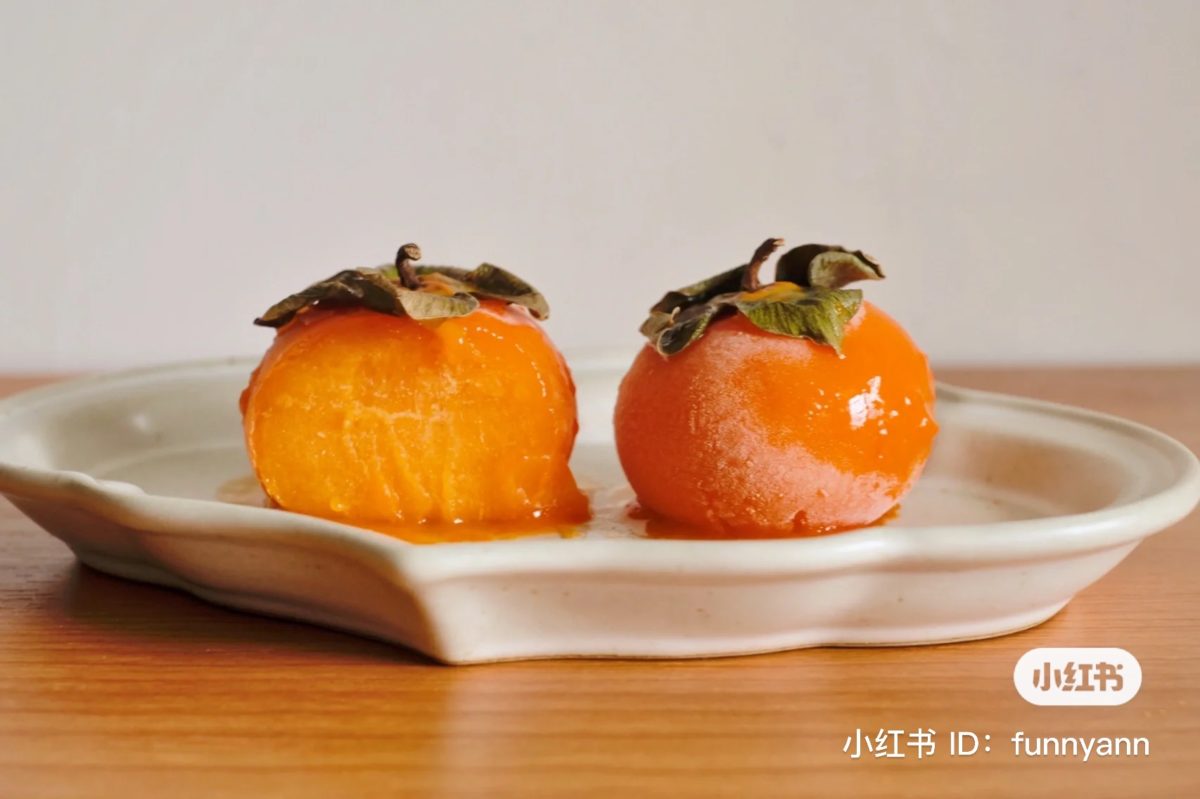
Persimmon craze
Although persimmons, symbolic of the fall harvest, are everywhere in China during this time of the year, the fruit was never perceived as the official flavor of autumn. But thanks to an emergence of persimmon-themed products that have cropped up in China this year, it might soon reach the cult-like status of pumpkin spice in the U.S. and become a mass-marketed marker of the onset of fall.
Since last month, in a bid to meet customers’ appetite for seasonal specials, food and drink makers in China have set their sight on the humble fruit, creating a multitude of persimmon-flavored stuff at a rate and volume previously unbeknownst.
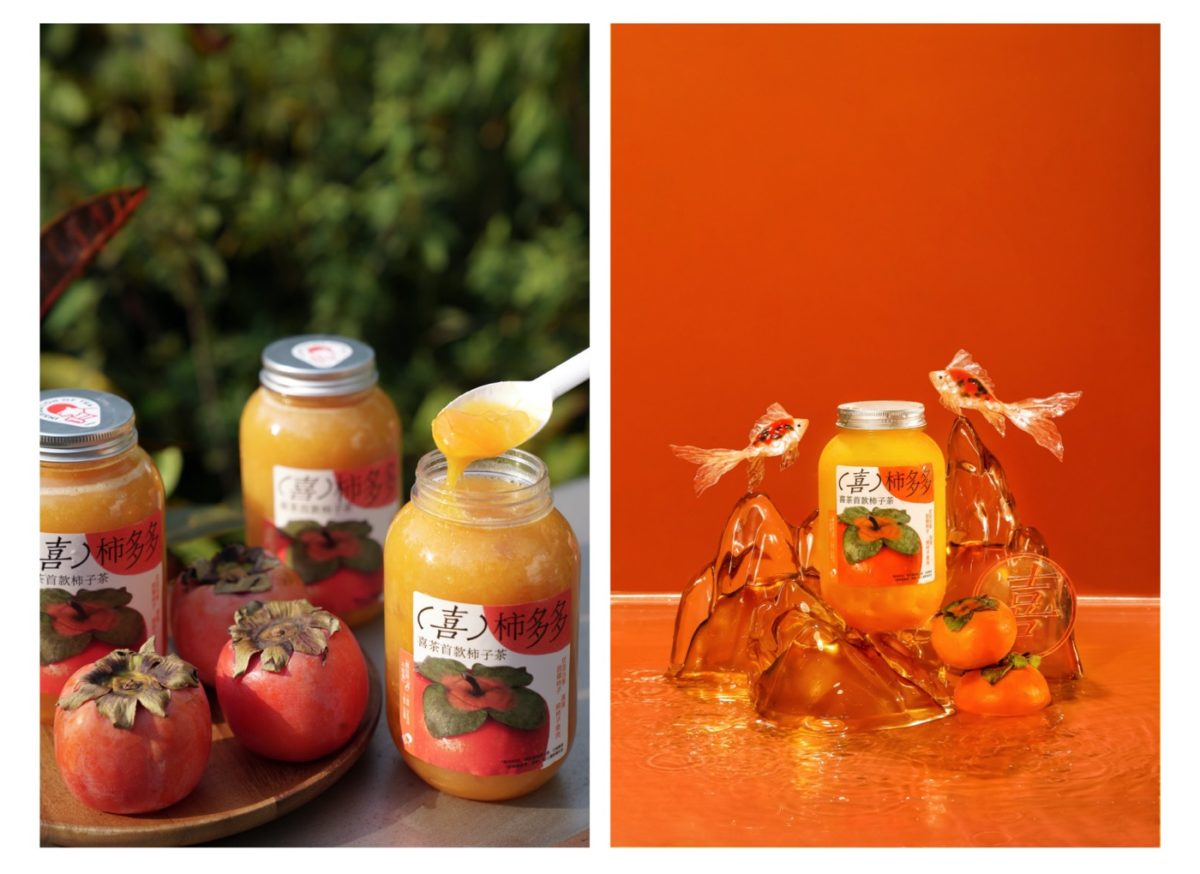
HEYTEA (喜茶 xǐ chá), a boutique beverage chain famous for its use of seasonal fruits in products, launched a persimmon-themed drink in mid-September to much hype and fanfare. In addition to its eye-catching color and rich flavor, HEYTEA fans also love the item for its name, xǐshìduōduō 喜柿多多, which is a homophone for xǐshìduōduō 喜事多多, meaning “more and more auspicious things.”
Earlier this month, Yěcuìshān 野萃山, a tea drink brand in China, unveiled a new juice that boasts two whole persimmons. Named xǐshìliánlián 喜柿连连, the product has been one of its best-selling items since its release.
For Zododo 佐敦道, a beverage chain that has more than 200 locations across the country, its new persimmon-themed drink launched on September 8 has reportedly improved its sales by 10 percent. “Many people like the persimmon for its flavor, and when we enhance the visual appeal of it in the drink, female customers are enticed to try it out and come back for more,” Liáng Jiǎnbīn 梁俭彬, the head of the company’s product development department, told Kāmén 咖门, a WeChat public account reporting on food trends in China.
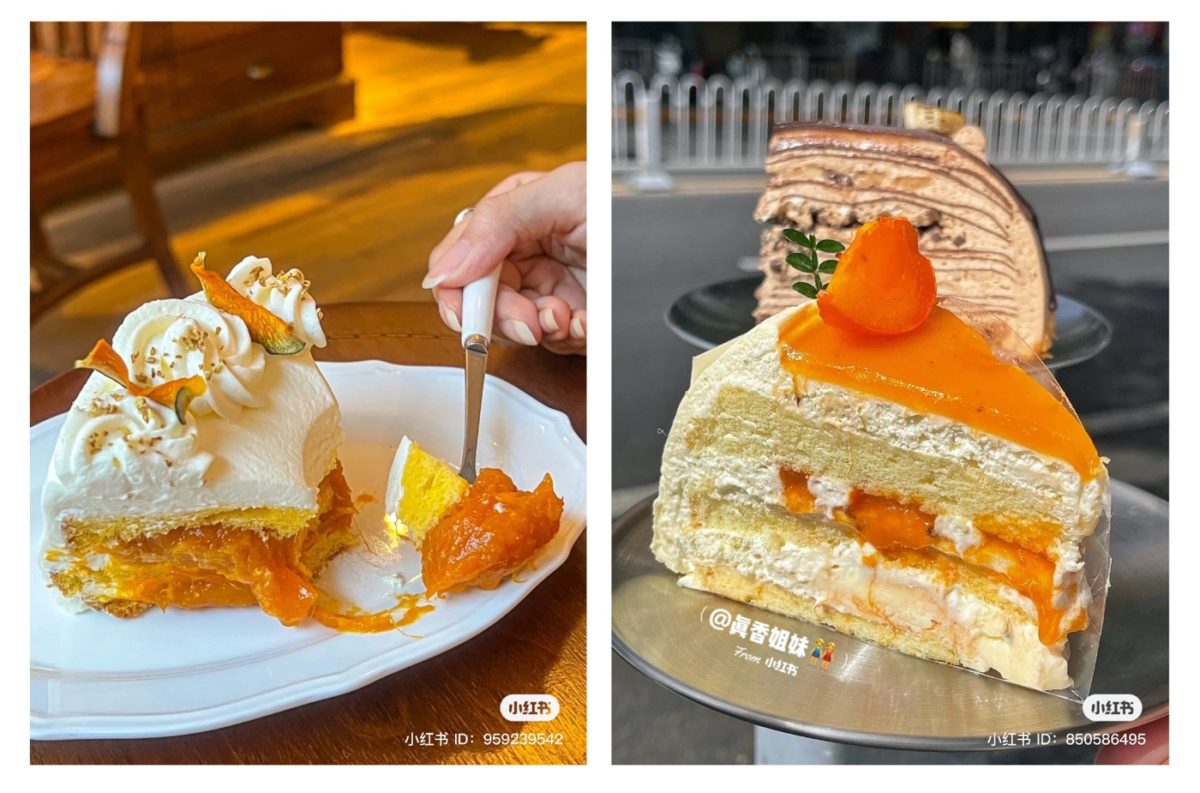
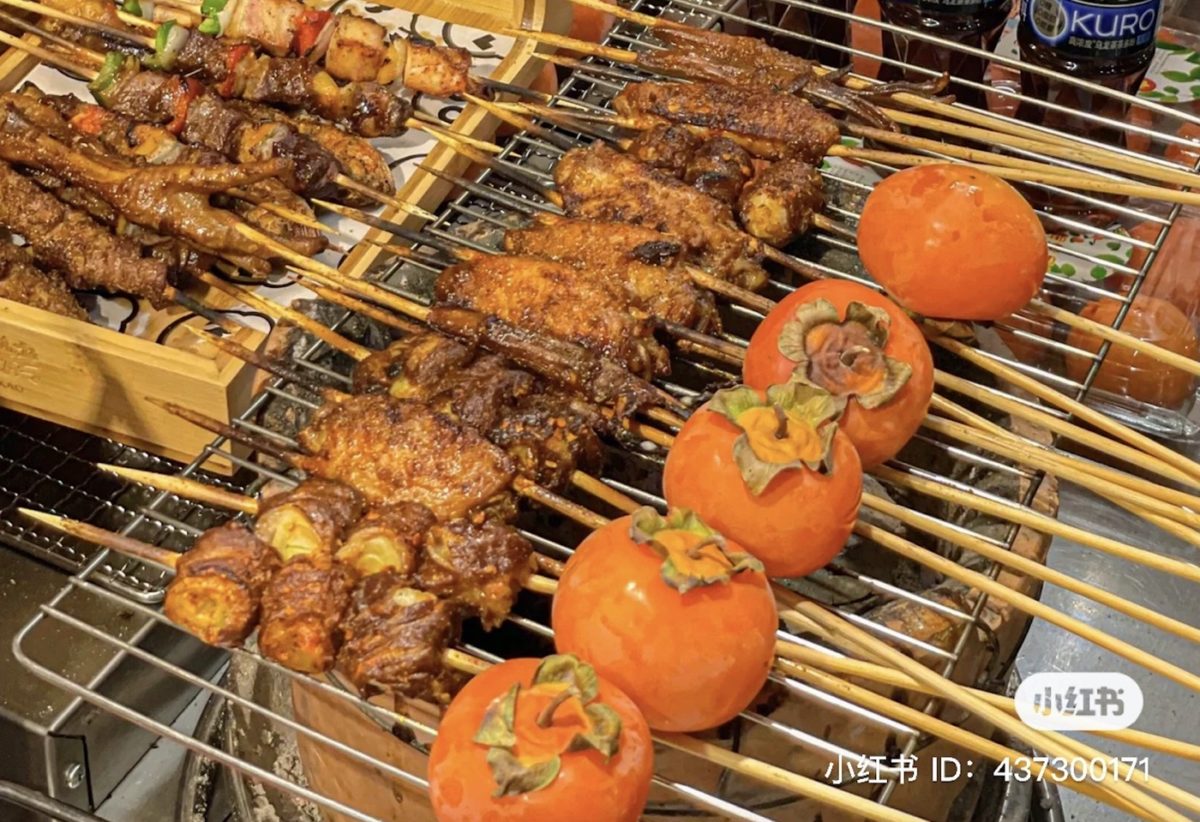
Persimmons are sweeping the dessert world by storm, as well. On lifestyle app Xiaohongshu, food bloggers have been writing glowing reviews of sweet treats revolving around persimmons, such as persimmon cakes, which often contain persimmon jam and chunky bits of the fruit inside.
Even restaurants don’t want to be left out: In some barbecue destinations, grilled persimmons have appeared on the menu. Is it just just a matter of time until the Chinese market gets flooded with persimmon-flavored cookies, milk, and candles, pumpkin spice-style?


